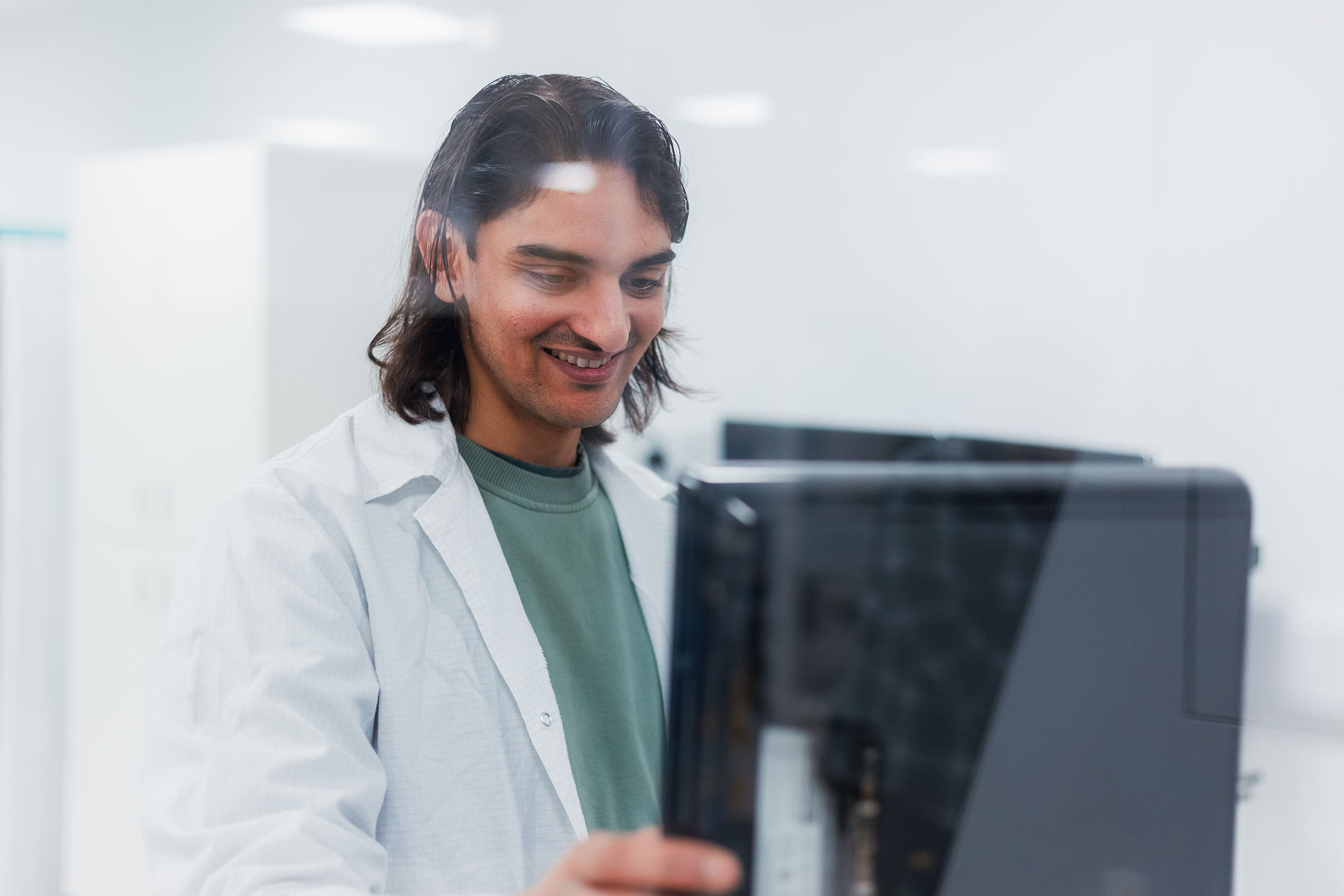What did you study?
At 18, I began a degree in product design, driven by my strengths in creativity and maths. Early on, I realised it lacked the analytical science I craved.
My friends and I started a 3D printing company, which grew into a venture capital business. After two years, investors shifted our vision, but I gained invaluable experience in design for manufacturing.
I later joined another 3D printing company, leading the design for their flagship product.
Inspired by a mentor, I returned to university for a BEng mechanical engineering.
Combining internships and part-time work with Neutron Star Systems, I pursued a Masters in thermal engineering.
Tell us about your role at CSA Catapult
After finishing my master’s, I joined CSA Catapult as an associate engineer. In my interview, I shared my desire to blend technical engineering with hands-on lab work.
At the Catapult, we research, troubleshoot, and adapt designs based on test results, seeing projects from concept to product.
After one year, I was promoted to packaging thermal design engineer and continued expanding my skillset.
Now, as a thermal design engineer, I focus on simulation-driven design for power electronics, photonics, and RF & microwave communications, working closely with 3D printers, furnaces, and testing equipment in the DER-IC and evaluation labs.
What has been a career highlight for you?
A recent highlight has been leading material development projects at CSA Catapult, focusing on multi-material integration and geometric design for advanced packaging.
It’s exciting to see how our innovations can change thermal and electrical performance in RF and power electronics.
Earlier in my career, working on high-temperature superconductors for in-space propulsion at Neutron Star Systems was also a standout experience.
It allowed me to directly apply my thermal engineering studies, balancing design, simulation, and hands-on work, which has shaped my approach to engineering today.
What type of projects are you working on at the moment?
I’m currently working on exciting material development projects focused on integrating multi-materials for a heterogeneous approach, altering thermophysical properties while maintaining key packaging principles.
For RF devices, we optimise layer counts to control dielectric strength while managing thermal dissipation, ensuring signal integrity. In power electronics, the focus shifts to minimising stray inductance and enhancing heat removal to prevent overheating.
We explore monolithic designs, like metamaterials, where geometry manipulates heat transfer. By adjusting geometry, we create solutions that reduce reliance on thermal conductivity. The choice between multi-material or metamaterial approaches depends on the project’s specific needs.
What emerging technology are you most excited about?
I’m really excited about functionally graded materials (FGMs), which allow us to tailor properties through gradients—leading to a future of engineered materials.
Generative design also grabs my attention for how it optimises structures, often resulting in designs that mimic natural, efficient forms.
It’s an exciting approach to engineering that challenges us to rethink traditional methods and explore more innovative, adaptable solutions.
Cryogenic computing is another field I’m eager to see evolve, especially its potential for energy-efficient systems and high-performance electronics. Advances in high-temperature superconductors and cryogenics are bringing superconducting transistors and quantum computers closer to practicality.
These evolving technologies are paving the way for a transformative future in engineering.
What advice would you give to students who’re thinking of becoming an engineer?
Engineering is ideal for problem solvers with analytical minds who enjoy research and mental challenges. Whether you’re reading papers, designing, or testing, it’s a hands-on, varied field.
You can’t force ideas. The best ones come during mundane moments like brushing your teeth. But these ideas grow only if you’ve done the groundwork—reading papers and staying up to date with new technologies. Good science requires preparation.
Concept visualisation is key: being able to sketch your ideas helps you explain them easily. Communication, presentation skills, and staying informed are essential for productive brainstorming and teamwork.






